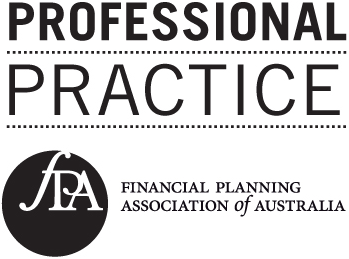Historic $130bn wage subsidy to cover 6 million workers
Prime Minister Scott Morrison has now unveiled an extraordinary $130 billion wage subsidy which will see businesses receive $1,500 a fortnight per employee for the next six months.

In the third and largest economic stimulus package announced by the government in response to the coronavirus pandemic, up to 6 million workers are set to be eligible for the $130 billion wage subsidy, known as the JobKeeper payment.
The flat $1,500 payment, which will be delivered by the ATO, will be paid to businesses, including businesses structured through companies, partnerships, trusts and sole traders.
Employers will be required to pass on the full $1,500 a fortnight, before tax, to eligible employees.
To qualify, businesses with a turnover of less than $1 billion will need to self-assess a reduction in revenue of 30 per cent or more, relative to a comparable period a year ago.
Businesses with a turnover of more than $1 billion will need to demonstrate a loss of 50 per cent of revenue.
Eligible employees will include those employed by the employer at 1 March 2020, including those who have been stood down. Retrenched workers can be re-hired to qualify for the payment.
How to apply
Eligible businesses, including not-for-profits, charities, and self-employed individuals, will need to register an intention to apply on the ATO’s website.
Information on the number of eligible employees engaged as at 1 March 2020 and those currently employed by the business, including those stood down or rehired, will need to be provided to the ATO, although the Tax Office will look to use Single Touch Payroll data to pre-populate the employee details for the business.
The ATO will make payments to the employers monthly in arrears but the first payment will be sent in the first week of May and will be backdated to 30 March 2020 to allow employers to start paying their workers now.
Employers will be required to report the number of eligible employees employed by the business to the ATO on a monthly basis.
‘A lifeline’
According to Mr Morrison, the wage subsidy is meant to prop up businesses by paying for their employees even as the economy comes to a standstill.
“We will pay employers to pay their employees and make sure they do,” said Mr Morrison.
“This plan is about keeping those businesses together, by keeping these employees in these businesses.
“We want to keep the engine of our economy running through this crisis. It may run on idle for a time, but it must continue to run.”
What employees will get
Businesses must pay their employees a minimum of $1,500 per fortnight, before tax.
According to Treasury’s fact sheet, if an employee ordinarily receives $1,500 or more in income per fortnight before tax, they will continue to receive their regular income according to their prevailing workplace arrangements, with the JobKeeker payment to subside all or part of their income.
If an employee ordinarily receives less than $1,500 in income per fortnight before tax, their employer must pay their employee, at a minimum, $1,500 per fortnight, before tax, meaning employers will not be able to pocket the difference.
If an employee has been stood down, their employer must pay their employee, at a minimum, $1,500 per fortnight, before tax.
The $1,500 will be taxed as ordinary income but employers can choose to pay superannuation on the amount.
Employees who receive the JobKeeker payment will not be allowed to double dip with the recently expanded JobSeeker payment, which is paid through Services Australia.
The latest package by the government brings the total amount thrown at the coronavirus crisis to $214 billion, including the $66.1 billion second tranche support package and the initial $17.6 billion.
Mr Morrison said the government is currently in discussions with Labor to reach agreement over the latest announcement and will be looking to recall Parliament shortly to speed through legislation as it did with the first two packages.
Treasury example:
Employer with employees on different wages
Adam owns a real estate business with two employees. The business is still operating at this stage but Adam expects that turnover will decline by more than 30 per cent in the coming months. The employees are:
Anne, who is a permanent full-time employee on a salary of $3,000 per fortnight before tax and who continues working for the business; and
Nick, who is a permanent part-time employee on a salary of $1,000 per fortnight before tax and who continues working for the business.
Adam is eligible to receive the JobKeeper Payment for each employee, which would have the following benefits for the business and its employees:
The business continues to pay Anne her full-time salary of $3,000 per fortnight before tax, and the business will receive $1,500 per fortnight from the JobKeeper Payment to subsidise the cost of Anne’s salary and will continue paying the superannuation guarantee on Anne’s income;
The business continues to pay Nick his $1,000 per fortnight before tax salary and an additional $500 per fortnight before tax, totalling $1,500 per fortnight before tax. The business receives $1,500 per fortnight before tax from the JobKeeper Payment which will subsidise the cost of Nick’s salary. The business must continue to pay the superannuation guarantee on the $1,000 per fortnight of wages that Nick is earning. The business has the option of choosing to pay superannuation on the additional $500 (before tax) paid to Nick under the JobKeeper Payment.
Adam can register his initial interest in the scheme from 30 March 2020, followed subsequently by an application to ATO with details about his eligible employees. In addition, Adam is required to advise his employees that he has nominated them as eligible employees to receive the payment. Adam will provide information to the ATO on a monthly basis and receive the payment monthly in arrears.
Self-employed
Melissa is a sole trader running a florist. She does not have employees. Melissa’s business has been in operation for several years. The economic downturn due to the Coronavirus has adversely affected Melissa’s business, and she expects that her business turnover will fall by more than 30 per cent compared to a typical month in 2019.
Melissa will be able to apply for the JobKeeper Payment and would receive $1,500 per fortnight before tax, paid on a monthly basis.
Jotham Lian
31 March 2020
accountantsdaily.com.au
Latest eNewsletters
Hot Issues
- AI exuberance: Economic upside, stock market downside
- Becoming a member of an SMSF is easy, but there are other things that need to be considered
- Investment and economic outlook, November 2025
- Move assets before death to avoid tax implications
- ATO issues warning about super schemes
- 12 financial tips for the festive season and year ahead
- Birth date impacts bring-forward NCCs
- Countries with the largest collection or eucalyptus trees
- How to budget using the envelope method
- Accountants united in support for changes
- Investment and economic outlook, October 2025
- Stress-test SMSF in preparation for Div 296
- Determining what is an in-house asset can help determine investment strategy
- Beware pushy sales tactics targeting your super
- Call for SMSF ‘nudge’ in DBFO package
- How Many Countries Divided From The Largest Empire throughout history
- How changes to deeming rates could affect your pension payments
- Five building blocks that could lead to a more confident retirement
- Investment and economic outlook, September 2025
- Caution needed if moving assets to children
- Evolution of ‘ageless workers’ sees retirement age rise
- Younger Australians expect more for their retirement
- New NALE guidance still has issues
- Airplane Fuel Consumption Per Minute
- How $1,000 plus regular contributions turned into $823,000 through compounding
- Common sense the best defence against fraudsters: forensic auditor
- Investment and economic outlook, August 2025
- New report highlights confusion over BDBNs
- How ‘investment procrastination’ could be hurting your wealth
- ATO warns that SAR lodgments are on its radar
- Compassionate release warning issued
- The biggest earthquakes in history : (1905–2025)


